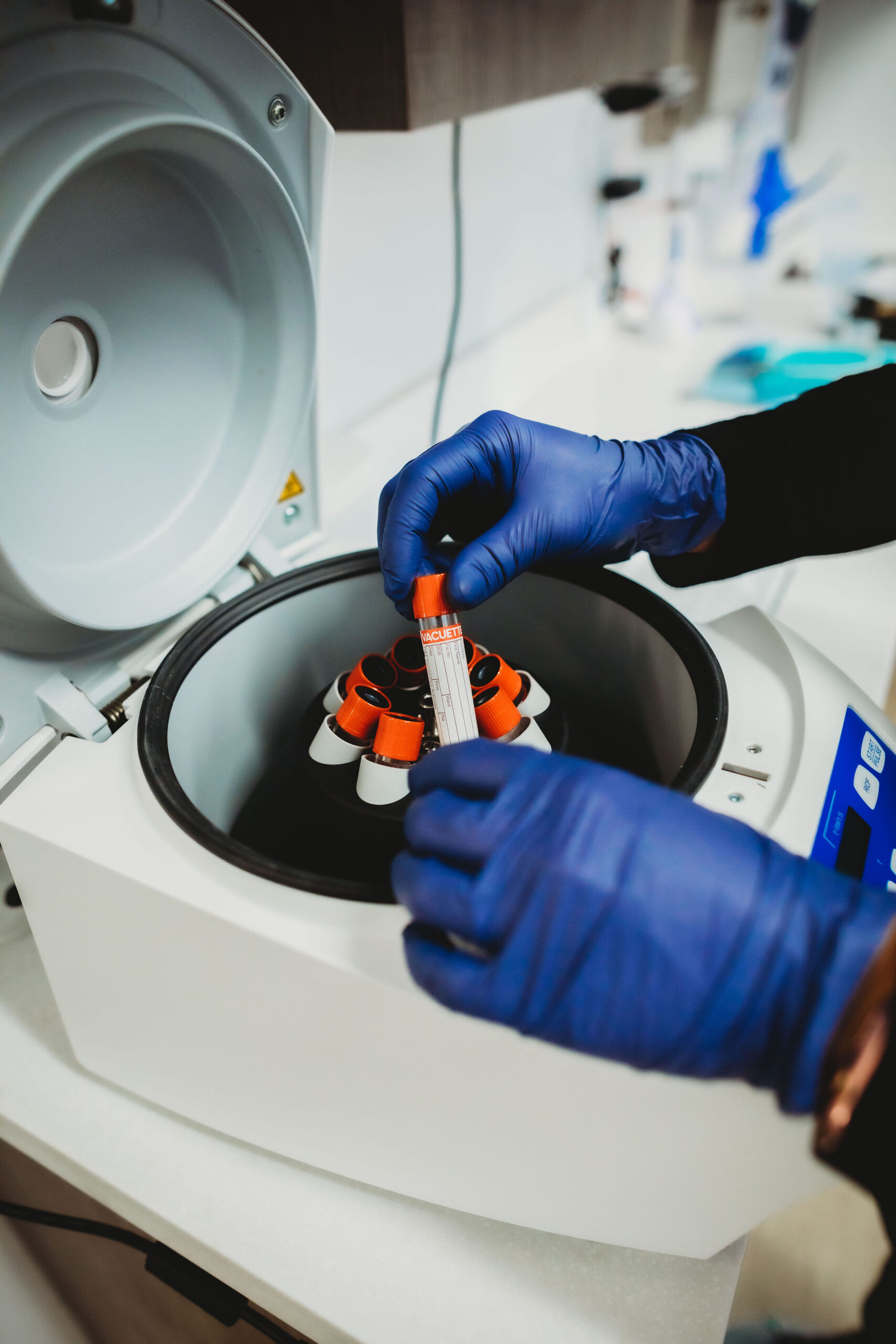Regenerative medicine focuses on using the body’s natural abilities to heal itself. The liver and intestines regenerate, bones heal themselves, and the skin repairs itself after being cut. Dentists have found a new way to use the body’s methods and tools for healing during periodontal and dental procedures—platelet-rich fibrin, or PRF.
The principal responsibility of the platelets in our blood is to clot and initiate healing. Our clinicians at Well Rooted Dentistry harness this power to aid in restoring the gingiva and surgical sites after dental treatment. Using PRF reduces swelling, promotes faster healing, and decreases discomfort. One Illinois dentist stated that “one week after surgery, it’s common for a surgical site…to appear as if it has been healing for three or four weeks.”
The Process for Creating PRF
Before dentists perform a procedure where PRF may be helpful, they will draw a vial of the patient’s blood. This is placed in a centrifuge that spins the vial for about 13 minutes until the blood is divided into three parts: the red blood cells, the platelet-rich fibrin (PRF), and the plasma.
It’s a simple process that provides incredible benefits to the patient.
What Happens Next
That PRF, which is made up of platelets, fibrin, white blood cells, stem cells, and bone growth factors, is removed from the vial and placed into the surgical site. Finally, the incisions are closed with sutures.
PRF is often used for wisdom tooth extractions and implanted tooth sites. Patients who opt out of using platelet-rich fibrin leave their surgical site empty and left to heal slowly on its own. During that time, bacteria, saliva, food, and other substances may impede the healing process or become lodged in the surgical area.
Additional Benefits of PRF
As stated earlier, platelet-rich fibrin promotes a quick recovery and reduces swelling and discomfort. PRF also offers several more advantages. For example:
- It is successfully used as sinus lift grafting material
- Platelet-rich fibrin helps preserve the alveolar ridge
- It increases early blood supply to extraction sites
- PRF reduces bone pathology and dry socket
- Patients experience better bone osseointegration around dental implants
- Platelet-rich fibrin increases treatment success rates
- PRF can aid in reconstructing bony defects after oral cancer surgery
- It enhances gum volume
- PRF has antibacterial properties
- It reduces inflammation of the bone by up to 90 percent
PRP: Platelet-rich Plasma
Our team at Well Rooted Dentistry also uses PRP – platelet-rich plasma. Like PRF, PRP requires a sample of the patient’s blood. However, PRP is spun at a higher speed, which allows the lighter cells (platelets and plasma) to collect in the upper part of the test tube. This liquid substance is then collected and injected into the targeted area. PRP is used to promote tissue vascularization, improve bone and tissue regeneration, and decrease tissue inflammation following surgery.
Learn More about PRF at Well Rooted Dentistry
At Well Rooted Dentistry, our biological dentists prioritize safe, non-toxic, biocompatible treatment methods that contribute to optimal overall health. PRF allows us to help patients heal faster and reduce their risk of infection after a dental procedure.
To learn more about our practice, or to schedule an initial consultation, contact our office today at (401) 533-9680. Our team is always standing by to answer any questions you may have about potential treatment.


